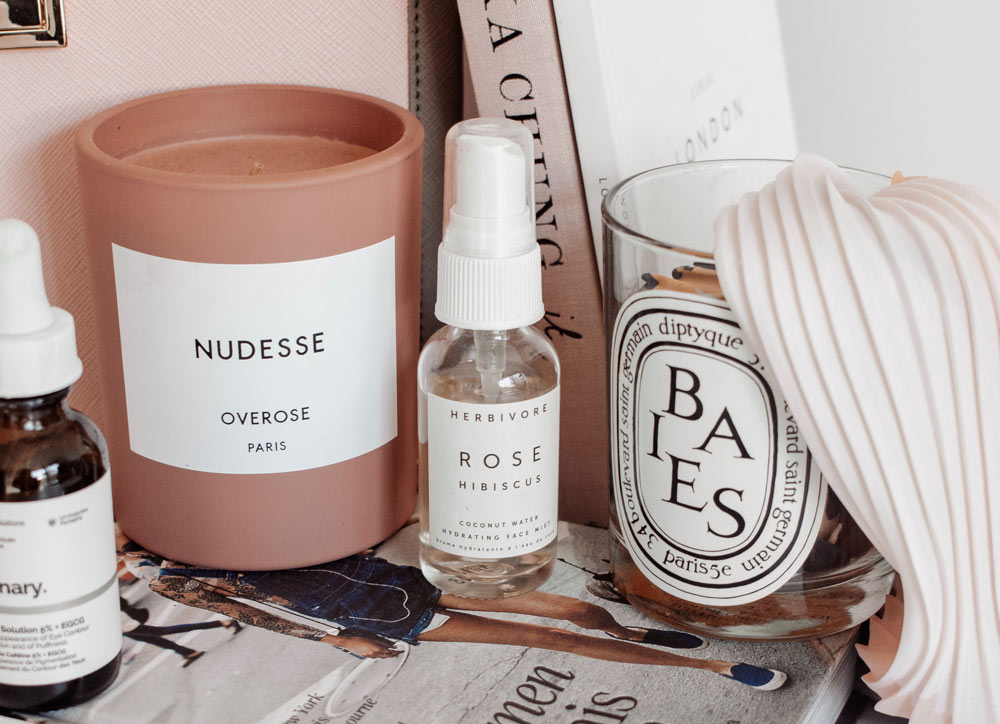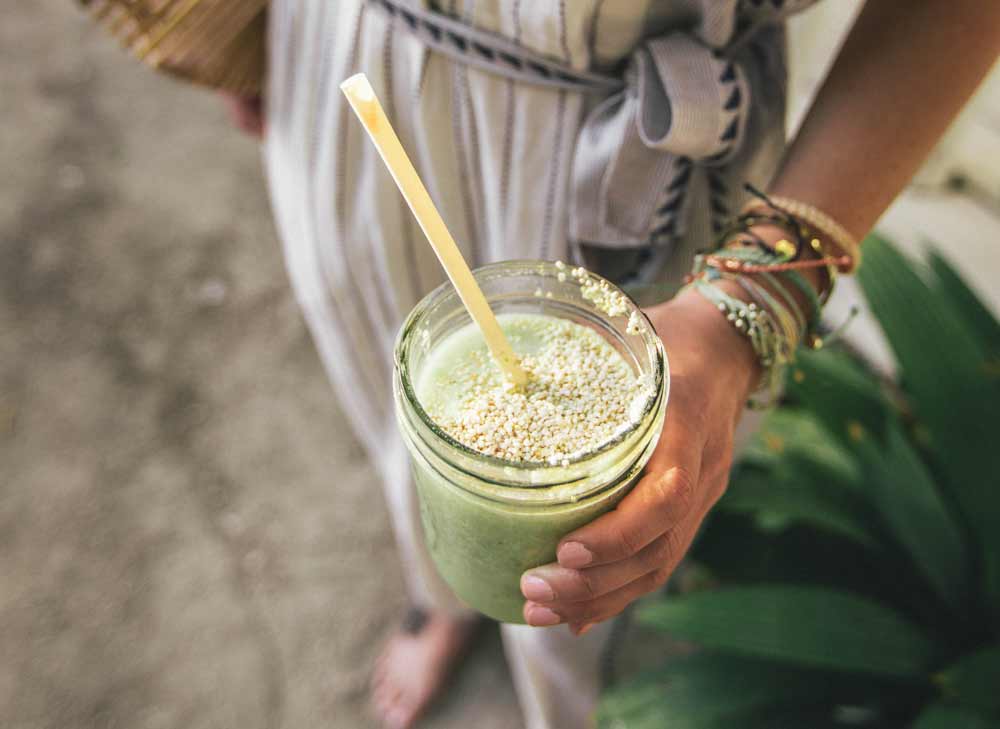I dislike lots of clutter in my kitchen - that being said, if there's a gadget or piece of tech that will make my life easier, I'll make a place for it somewhere amongst the pots and pans!
Lately, with the cost of living rising, I've been finding myself cooking a lot more meals at home. Where I would usually treat myself with a meal out on a Saturday night, I know that I can make it so much cheaper with ingredients from the grocers. And, as I enjoy cooking so much, this act of making myself a delicious meal with my own hands has become an important act of self care for me.
Having begun cooking so much more frequently, I've been browsing Amazon to check for tools to make the process simpler and more enjoyable. Many of these tools I've found are relatatively reasonable in price and - even better - have a very low cost-per-use as I'm utilising them almost every day.
Here are 10 kitchen essentials that I would highly recommend if you love cooking, if you want to cook at home more due to the rising cost of living, or if you just fancy treating yourself.
1. 9-in-1 vegetable chopper
If there's one thing I physically can't stand, it's chopping onions. I've tried everything that the internet has suggested, from wearing glasses to soaking the onions in water prior to chopping. My eyes stream when I cut them, and it's not just irritating, it's painful. I guess I just have very sensitive eyes...
This vegetable chopper does the job for me in one swift move - no chopping board, no knife, no crying. It comes with a load of extras too, including:
- Hand peeler
- Juicer
- Spiraliser
- Egg separator
Bar the peeler, I had none of these tools prior to buying this set, so my kitchen is well equipped!
2. Food Huggers
Talking about onions, have you been in that position where you've only used half of one, and had to store the other half? I prefer not to use cling film as it's a single-use plastic and therefore a poor environmental choice, and placing it in tupperware seems to dry it out.
Instead, these food huggers come in handy! Just pop one over the cut side of the onion, and it keeps it fresh, ready for when you need it. They can also fit over the tops of jars and tins, and they're reusable and dishwasher safe!
3. Nesting mixing bowls with attachments
Before the pandemic, I had just one mixing bowl - a plastic mixing bowl that I bought around six years ago, that has been used for everything from making meringue to mixing up guacamole. While it's still well used, these nesting bowls have also come in very handy for their various sizes and attachments.
They've got non-slip bottoms, which means that they won't slide around on hard kitchen counters. They also come with lids, which is ideal for storing food, marinating and more! But what's really handy is the attachments - a shredder, grater and slicer. These fit into the top of the largest bowl, so you can shred, grate and slice directly into it, and the bowl will catch all the food.
4. Large silicone ice moulds
I know what you're thinking - these ice moulds aren't really a cooking utensil. But in fact, they come in very handy for storing liquids which can be ready to use in cooking, such as stock, which can be frozen for up to four months. You can also use them for portions of soup, smoothies, and my personal favourite, coffee (great if you love iced coffee but don't want it watered down with ice cubes made with water.
5. Stasher silicone food bags
These are a little on the pricey side (£56 for a pack of four at the time of writing), but they last for SO long, and they can be used in the dishwasher, microwave and freezer for storing food. They're ideal for leftovers, or for taking food to work or school - you can also used them as makeup bags for travelling, pencil cases, and much more.
Each bag is self sealing, featuring air tight technology which is great for marinating, which I do a lot of! I'm a big fan of tofu, and these bags are ideal for marinating cubes or slices for use in a couple of hours of the next day. Best of all the bags are BPA, PVC and latex-free.
If the price is too high, save these in your wishlist until there's an Amazon Prime day, or wait for the Black Friday sales!
6. Silicone pot holders
I love making one-pot meals, and if you have a few people round and want them to serve themselves, you can use these holders to pop your pot on so that it doesn't burn your table. They're non-slip, which is perfect if you're using a hard surface, and they're foldable - making for easy storing! I used to have a metal grid on which I'd place hot pots to serve, but it took up so much space in the cupboards. These holders really save me space!
Even better, being made from silicone, they're so easy to clean. You can hand wash them or place them in the dishwasher and they won't suffer from heat damage.
7. COSORI Air Fryer
Air fryers are so popular lately, and the hype is totally justified. You can make SO many meals in an air fryer (from roast potatoes, to pork chops, to desserts) and you'd use far less oil than you would when frying. Air fryers are also so much better than a microwave when it comes to reheating food, as they reduce the reheating time, don't leave leftovers soggy, and reheat evenly (no more cold spots in your food).
If you're worried about the cost of living increasing, an air fryer is a great initial investment. According to Heart, an electric oven could cost you up to £316.54 to run per year, whereas as air fryer costs just £52.74 per year - that's just over 14p per day. It's also very easy to clean!
This COSORI air fryer has rave reviews on Amazon. Have a read for yourself
here to see if it's the right one for you.
8. Fresh cut herb keeper
I love to grow herbs, but I use them a lot in my cooking, so when I've run out I tend to pop to the shops to keep me topped up while my plants put out new leaves. However, I do find that cut herbs go bad really quickly, which is where this herb keeper helps!
You pour some water in the bottom of the tank, then stand the herbs up inside and cover over with the clear top. Then, you just pop it in your fridge until you're ready to use the herbs. They'll be much fresher than leaving them in a bag without hydration.
9. Bowl huggers
Taking hot dishes out of the microwave can be cumbersome - I can't recount how many times a bowl has slipped out of my hand because it was too hot and the tea towel I was covering it with wasn't thick enough to protect me from the heat.
These bowl huggers are microwave safe, which means they you can place your dish or bowl of food inside them and microwave them together. They're also great for holding your food while you're eating!
Want to shop more kitchen essentials? Take a look at my Amazon storefront, where I've created lists of everything that I use in the kitchen and the rest of the home.






























